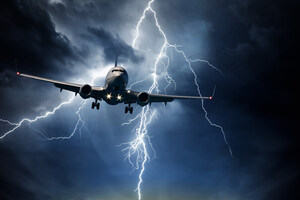Artemis Aerospace looks inside the world of aircraft simulator creation
WISTON, WEST SUSSEX, England, May 18, 2022 /PRNewswire/ -- Dan Frith, Flight Simulator Support & Sales Director at component solutions experts Artemis Aerospace, takes us inside the world of aircraft simulator creation.
Since simulators were first used to assist pilots with mastering simple aircraft manoeuvres in the early 1900s, they have evolved into the fully equipped and highly technical pieces of kit that are used worldwide today.
Their use in modern aircraft training is now crucial for pilots and airlines. When incidents in the air occur, it's largely the actions of the pilot that determine whether a flight lands safely or becomes a fatal situation. Simulators allow pilots to safely train for every possible eventuality, including engine failures, tyre blowouts, difficult weather conditions and bird strikes.
Flight simulators can also assist investigators, helping them to make sense of accidents after they occur while providing evidence that pilots were not at fault and did their utmost to protect passengers and crew.
Most recently, this was demonstrated following the famously flawless landing of US Airways Flight 1549 by Captain Chesley 'Sully' Sullenberger, and first officer Jeffrey Skiles. Sully and Skiles ditched their aircraft in New York's Hudson River, saving all 155 people on board, after a freak bird strike took out both engines. In the months that followed, investigators used simulator re-enactments that helped to eventually prove the pilots had made the correct decision to land on water rather than attempt to return to a nearby airport. This shows how invaluable simulator training is for pilots and how essential it is to investigating incidents in the sky.
Early simulators were basic. One of the best-known devices was the Link Trainer, produced by Edwin Link in the US in 1927. This comprised a basic metal frame painted in blue with a pneumatic motion platform driven by inflatable bellows to provide pitch and roll cues.
Initially, little interest was shown in simulators until World War II, when the Link Trainer became the principal pilot trainer. Around 10,000 were produced to train more than 500,000 pilots from the allied nations.
In 1954, the first of four simulators produced by Curtiss-Wright were bought by United Airlines at a cost of US$3 million. Similar to early models, these simulators had the added benefit of visuals, sound and movement. They became the first examples of the modern flight simulators used for commercial aircraft.
Standardising flight simulators
Initially, flight simulators weren't regulated and, even for the same aircraft type, there were no two identical simulators. This issue caused concern for pilots and regulators, eventually leading to a technical committee being set up under the umbrella of the IATA (International Air Transport Association) and an internationally recognised system of simulator standards and certifications was subsequently put in place.
Types of simulators
Depending on the purpose there are three types of simulators: ATD (Aviation Training Device), FTD (Flight Training Device) and FFS (Full Flight Simulators). Pilots are required to test their skills in various situations regularly.
Everything on a simulator has to be an exact replica of the aircraft it represents, so attention to detail is critical. Even lever tensions on the throttles are adjusted to be identical to the real thing.
Unsurprisingly, building a simulator is expensive. On average, depending on the make and model being replicated, simulators cost between USD$7.5 million to USD$12.5 million to produce.
Flight simulator manufacturing and maintenance
Simulator manufacturing is highly competitive and there is a constant pressure to reduce costs. While OEMs, such as CAE, produce and distribute the bulk of simulators worldwide, refurbishing existing units or renovating parts to create a complete simulator offers a cost-effective solution compared to buying brand new. For example, at Artemis Aerospace, we regularly manage projects to produce simulators for specific aircraft, including business jets, alongside providing repair parts to keep simulators operational.
With aircraft training devices running for up to 22 hours a day, 7 days a week, when defects arise this can seriously disrupt training schedules and result in extensive revenue loss.
Over the next ten years, it is estimated that there will be more than 255,000 new airline pilots with an additional 180,000 first officers training to become captains. Simulators are crucial in managing and maintaining this ever-increasing workforce and ensuring that air travel remains one of the safest forms of transport.
Website: www.artemisaerospace.com
Photo - https://mma.prnewswire.com/media/1820897/Artemis_Aerospace_Dan_Frith.jpg







Share this article